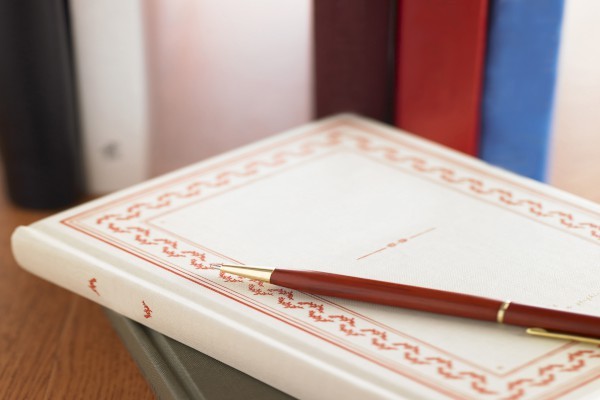【#第一文档网# 导语】以下是®第一文档网的小编为您整理的《水立方英文》,欢迎阅读!

Beijing National Aquatics Center National Swimming Center--Exquisite and Exciting "Water Cube" its surface, is a shape very similar to the structure of "H2O", the outlook for the National Swimming Center at the 2008 Olympic Games. After the games, it will become a recreational water park open to the public. In Chinese culture, water is an important natural element. It creates a calming atmosphere and inspires happiness. Taking full consideration of the functions of water in recreation and bodybuilding, designers have explored many ways for people of different age groups to appreciate its function. The design is called "Water Cube". Many creative designs have been employed in the creation of the swimming pools at the swimming center. Other high-tech facilities including optical devices used to define positions of athletes, and multiple-angle, three-dimensional screening systems are provided to help spectators enjoy competitions. The National Swimming Center, one of the three landmark buildings for the 2008 Beijing Olympic Games, is located inside the Beijing Olympic Park. Covering a total floor space of 50,000 square meters, it has 17,000 seats. The project costs about US$100 million. The center will be a venue for swimming, diving, synchronized swimming and water-polo games during the period of the Olympic Games. After the games, the center will become a large water recreational center open to the public. In January 2003, Beijing started to solicit design schemes for the National Swimming Center. The international competition settled on "Water Cube" as the winning scheme. It is designed by the design consortium consisting of the China State Construction Engineering Corporation, China State Construction International (Shenzhen) Design Co Ltd, PTW Architects (Australia) and Ove Arup (Australia). The National Swimming Center will be the only landmark Olympic venue that is constructed by donations from compatriots from Overseas. simplified Chinese: 北京国家游泳中心; traditional Chinese: 北京國家游泳中心 The Beijing National Aquatics Center, also known as the National Aquatics Center, and nicknamed the Water Cube, is an aquatics center that was built alongside Beijing National Stadium in the Olympic Green for the swimming competitions of the 2008 Summer Olympics. Despite its nickname, the building is not an actual cube, but a cuboid (a rectangular box). Ground was broken on December 24, 2003, and the Center was completed and handed over for use on January 28, 2008. Swimmers at the Water Cube broke 25 world records during the 2008 Olympics. After the Olympics, the building is now undergoing a 200 million Yuan revamp to turn the inside into a water park. Architecture In July 2003, the Water Cube design was chosen from 10 proposals in an international architectural competition for the aquatic center project. The Water Cube was specially designed and built by a consortium made up of PTW Architects (an Australian architecture firm), Arup international engineering group, CSCEC (China State Construction Engineering Corporation), and CCDI (China Construction Design International) of Shanghai. The Water Cube's design was initiated by a team effort: the Chinese partners felt a square was more symbolic to Chinese culture and its relationship to the Bird's Nest stadium, while the Sydney based partners came up with the idea of covering the 'cube' with bubbles, symbolising water. It should be noted that contextually the cube symbolises earth whilst the circle (represented by the stadium) represents heaven. Hence symbolically the water cube references Chinese symbolic architecture. Comprising a steel space frame, it is the largest ETFE clad structure in the world with over 100,000 m² of ETFE pillows that are only 0.2 mm (1/125 of an inch) in total thickness[8]. The ETFE cladding allows more light and heat penetration than traditional glass, resulting in a 30% decrease in energy costs. The outer wall is based on the Weaire–Phelan structure, a structure devised from the natural formation of bubbles in soap lather.[9] The complex Weaire–Phelan pattern was developed by slicing through bubbles in soap foam, resulting in more irregular, organic patterns than foam bubble structures proposed earlier by the scientist Kelvin. Using the Weaire–Phelan geometry, the Water Cube's exterior cladding is made of 4,000 ETFE bubbles, some as large as 9.14 metres (30.0 ft) across, with seven different sizes for the roof and 15 for the walls. The structure had a capacity of 17,000[8] during the games that is being reduced to 6,000. It also has a total land surface of 65,000 square meters and will cover a total of 32,000 square metres (7.9 acres)[8]. Although called the Water Cube, the aquatic center is really a rectangular box (cuboid)- 178 metres (584 ft) square and 31 metres (102 ft) high. Olympics The Aquatics Center hosted the swimming, diving and Synchronized Swimming events during the Olympics. Water polo was originally planned to be hosted in the venue but was moved to the Ying Tung Natatorium. Many people believe the Water Cube to be the fastest Olympic pool in the world. It is 1 meter deeper than most Olympic pools. Up to a certain limit, beyond which swimmers will lose their sense of vision, deeper pools allow the waves to dissipate down to the bottom, leading to less water disturbance to the swimmers. The pool also has perforated gutters on both sides to absorb the waves. With the popularity of the newly introduced faster Speedo LZR Racer swim suit, the Aquatics Center saw 25 world records broken in the Beijing Olympics. Since June 20, 2009 the Watercube has been open to the public on certain days of the week. It is also used for sound and light shows and during the summer of 2009 was turned into a ballet theater for a production of Swan Lake. The building's popularity has spawned many copycat structures throughout China. The Watercube closed to the public to undergo renovations on October 15, 2009. 本文来源:https://www.dywdw.cn/e8811bd7effdc8d376eeaeaad1f34693dbef10d7.html

